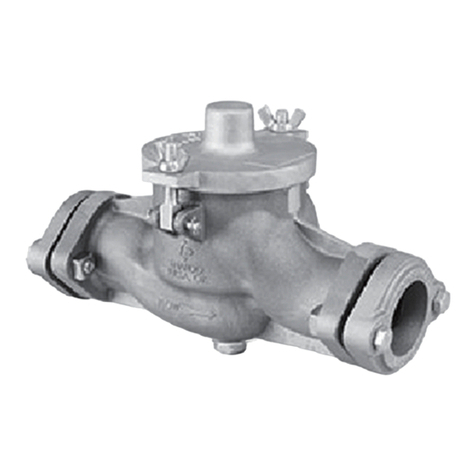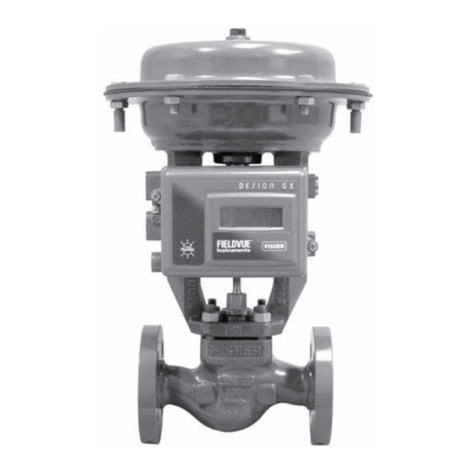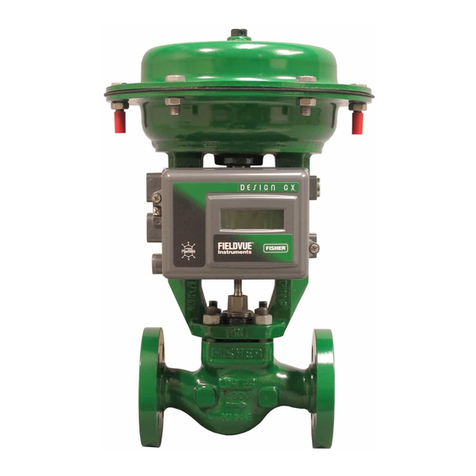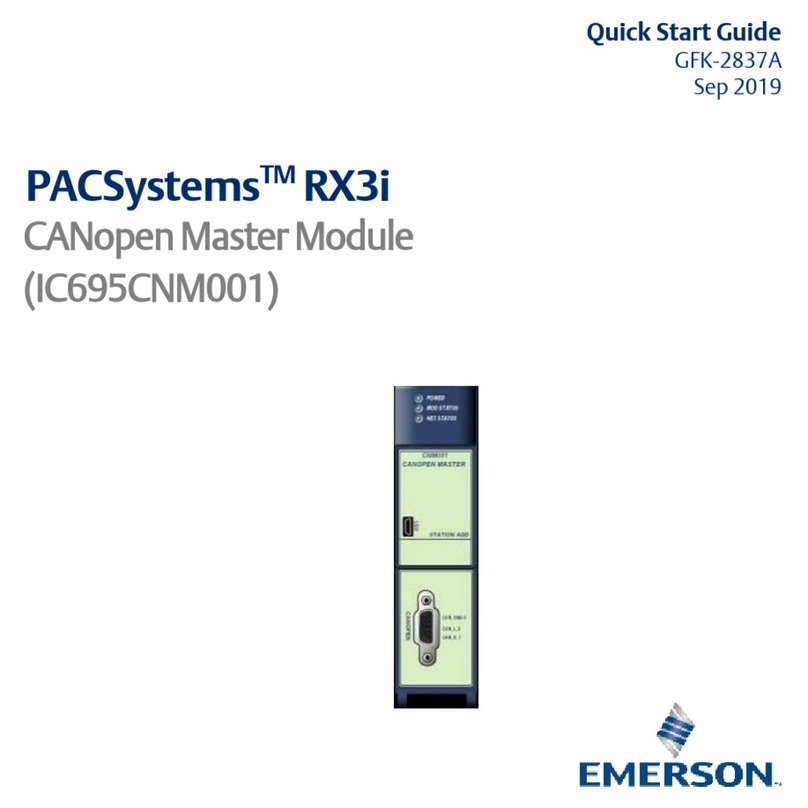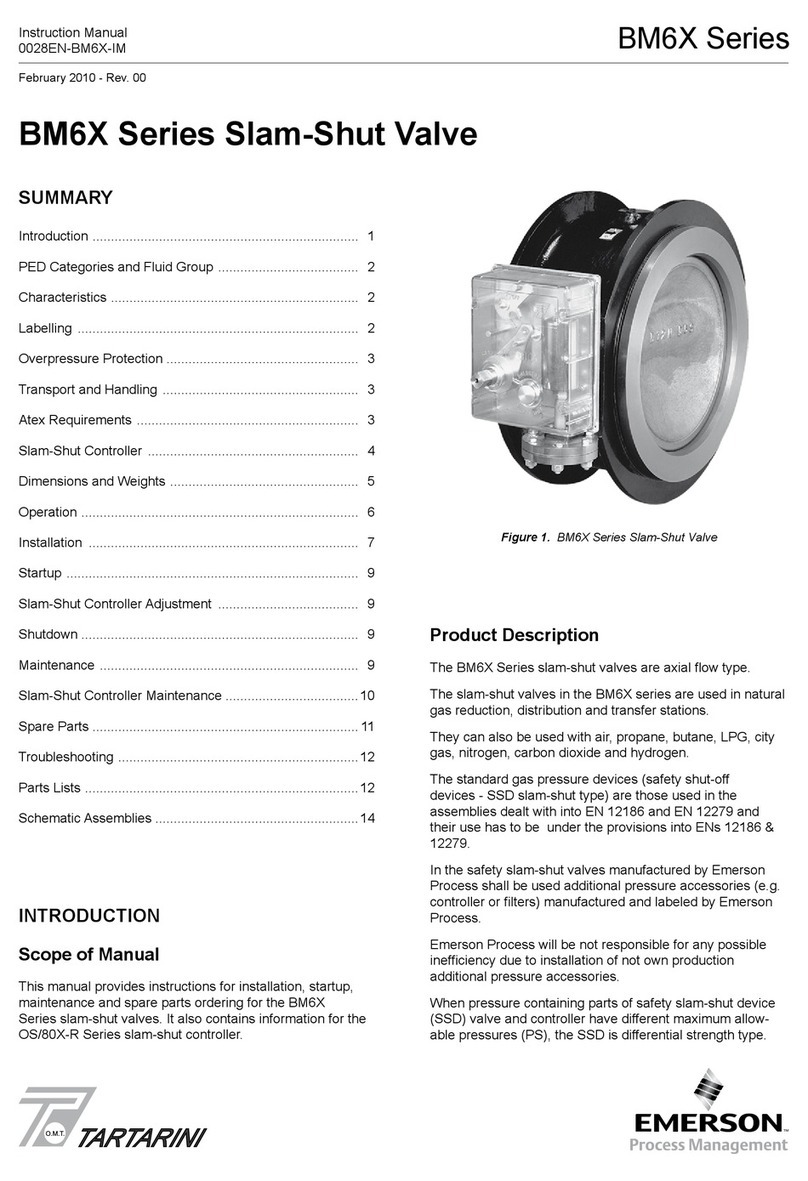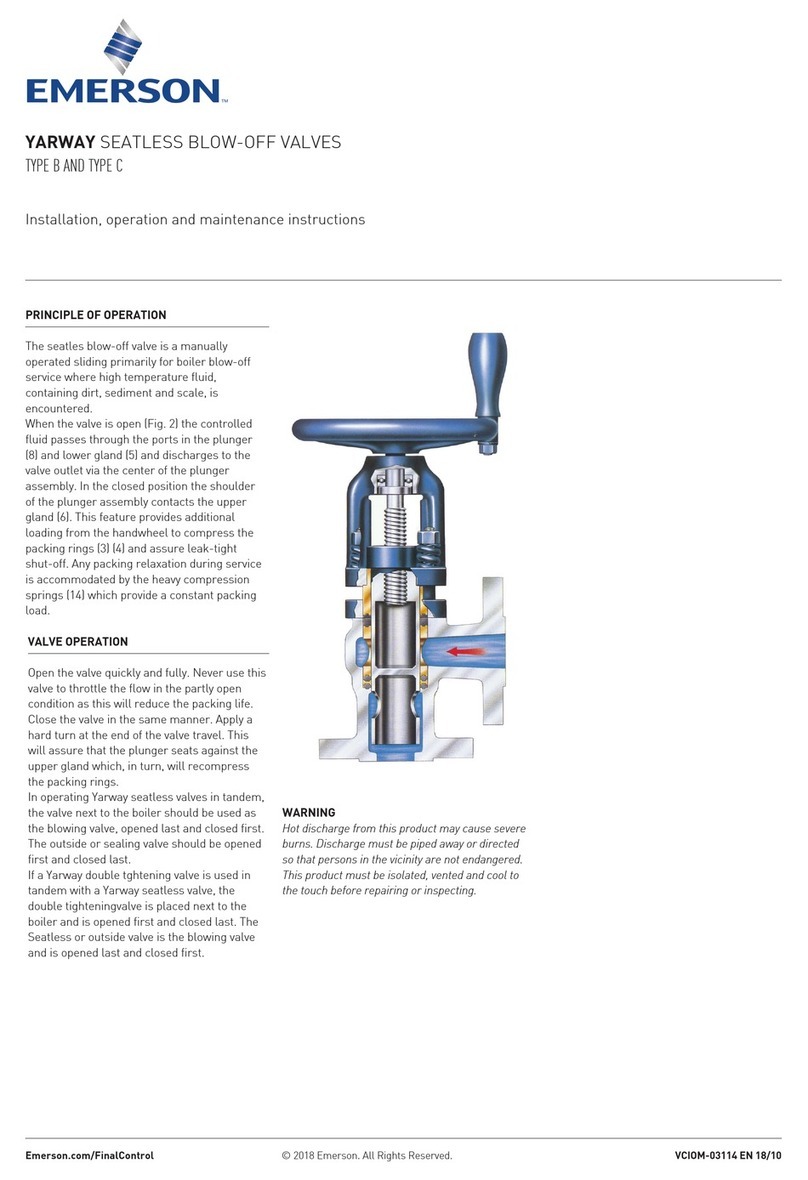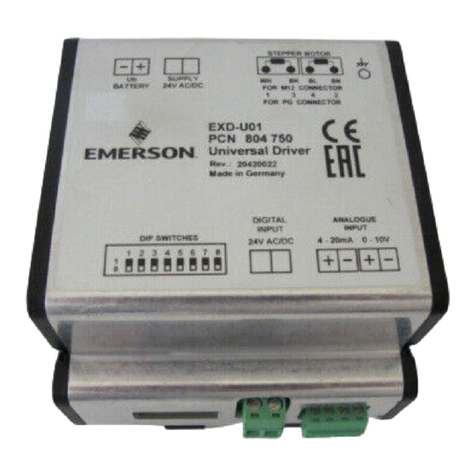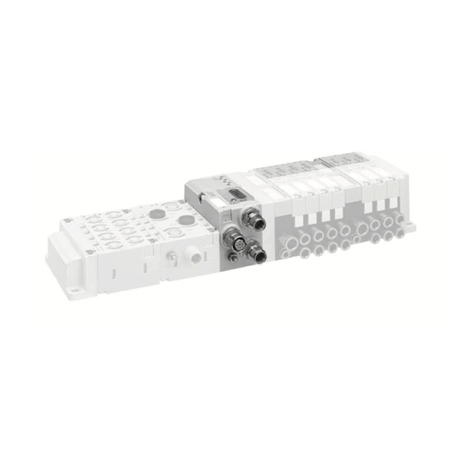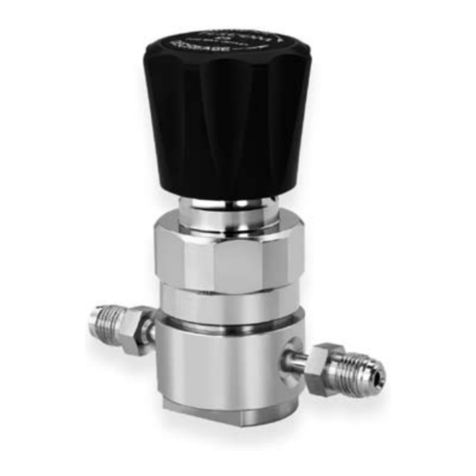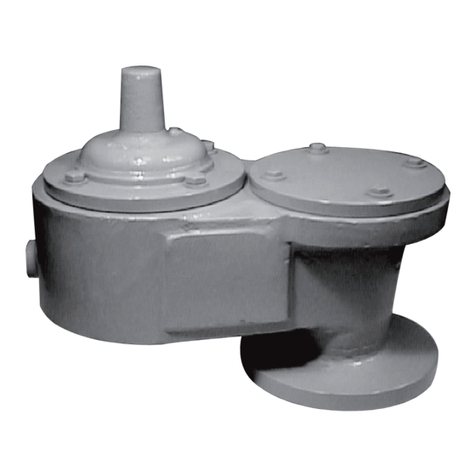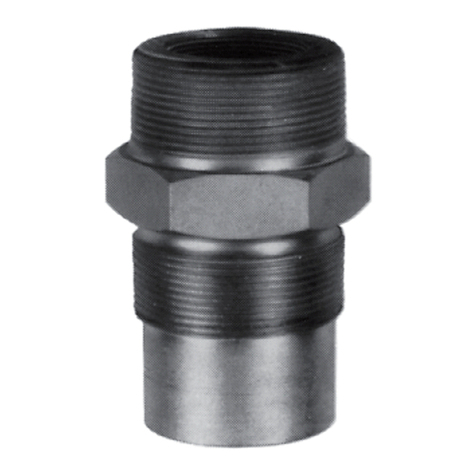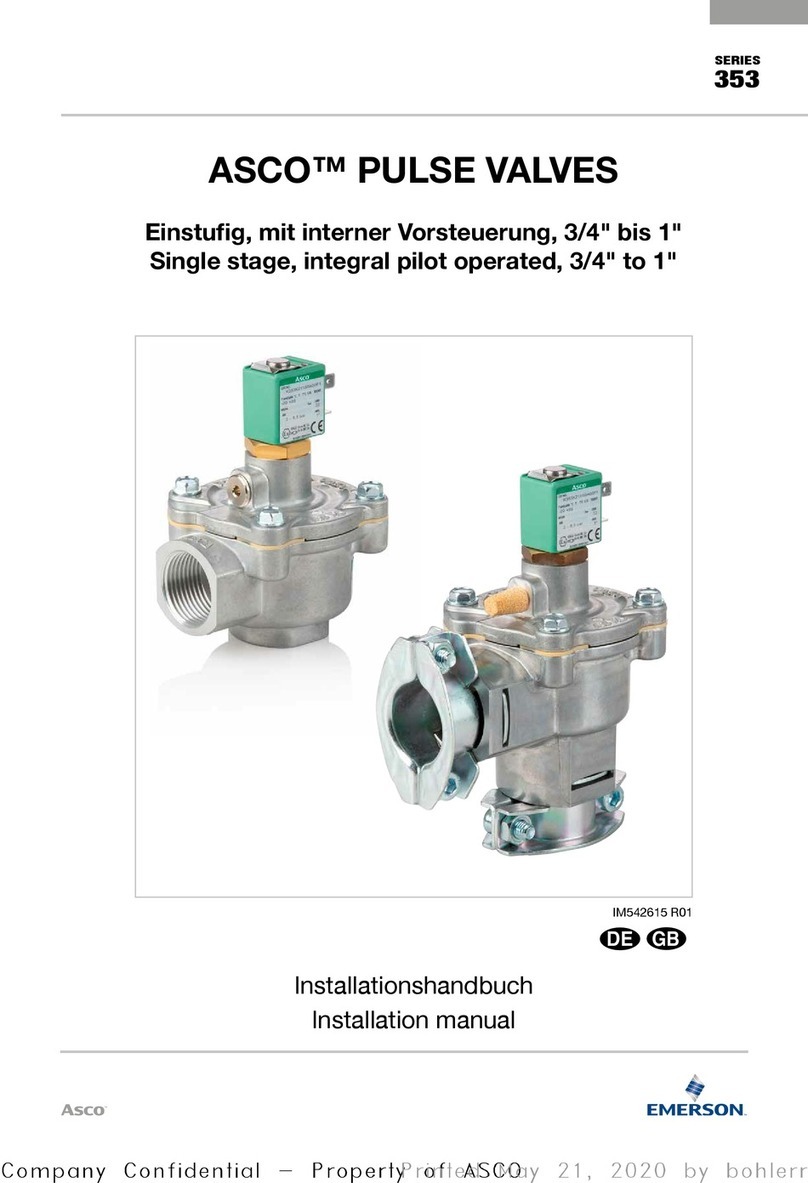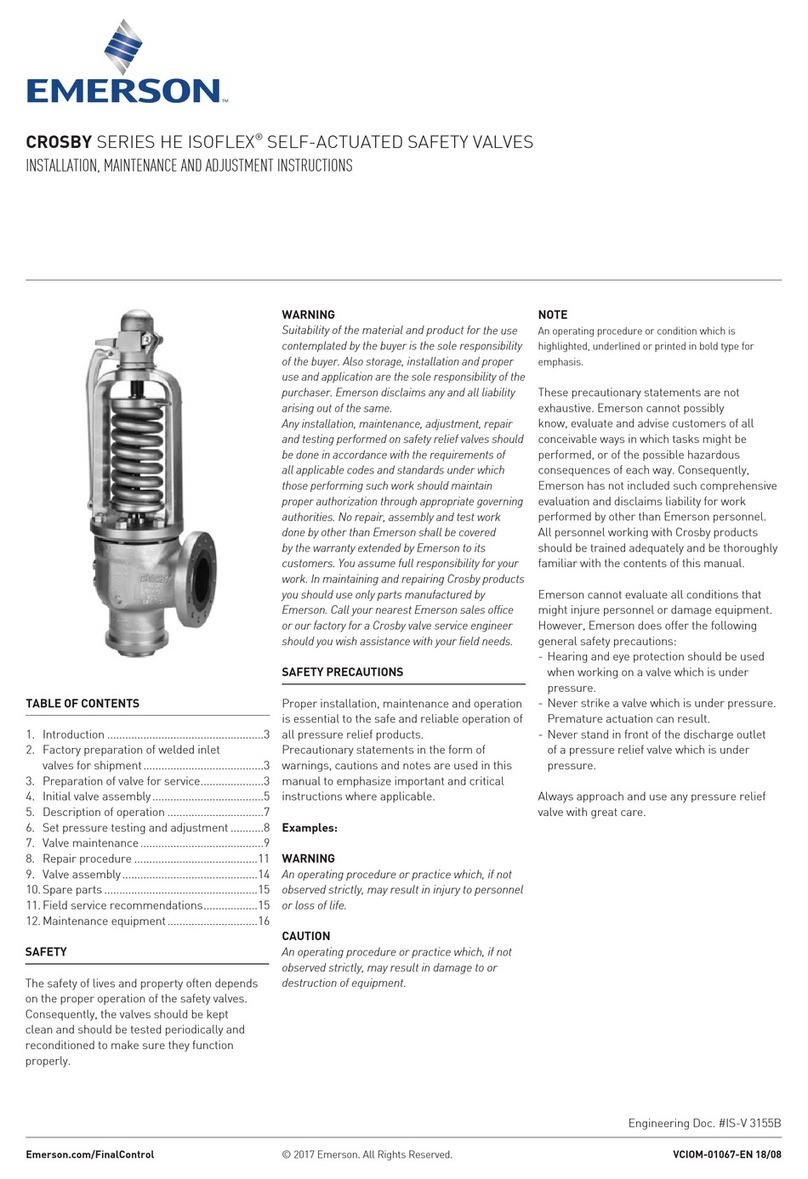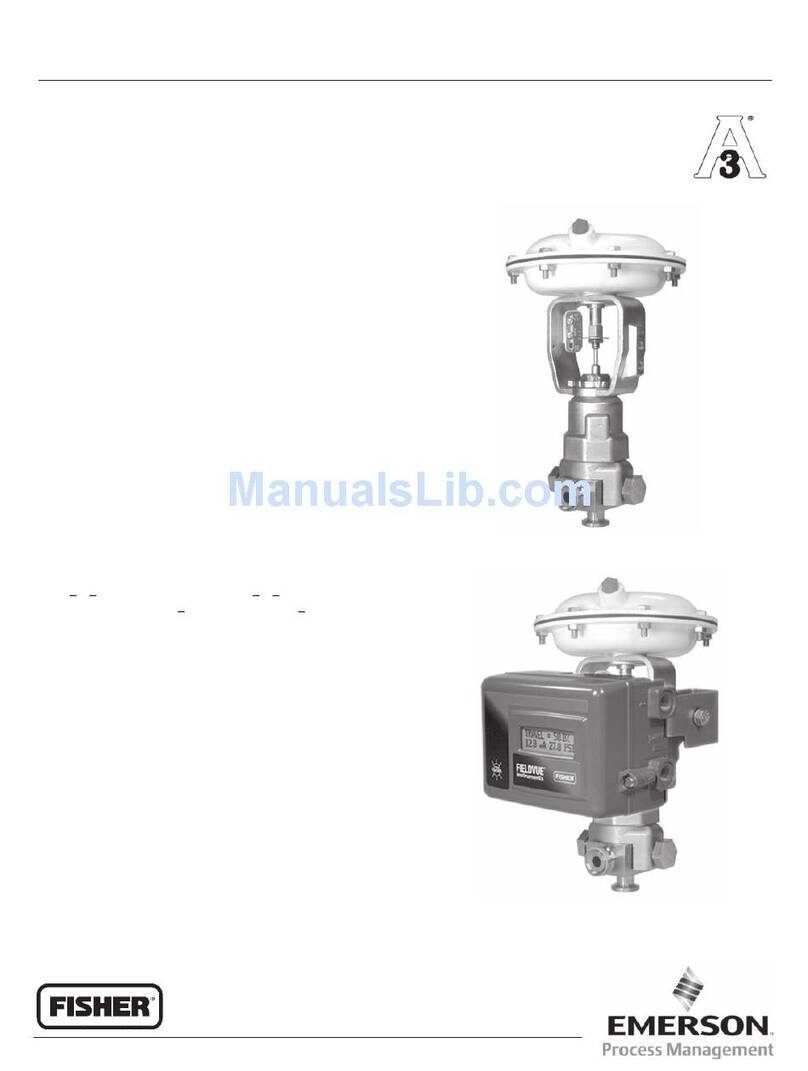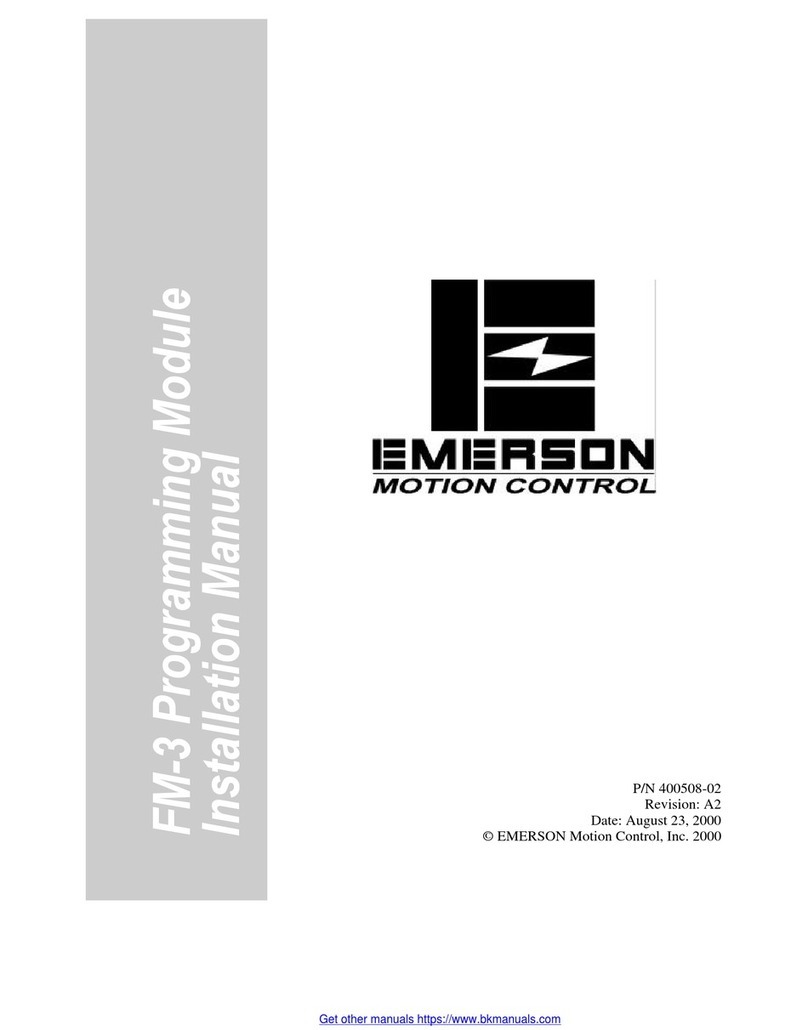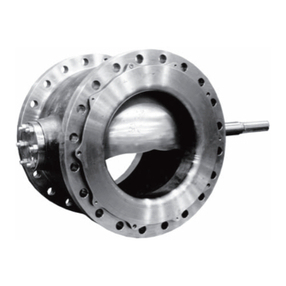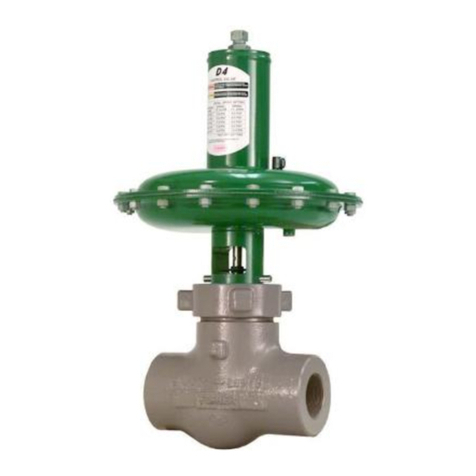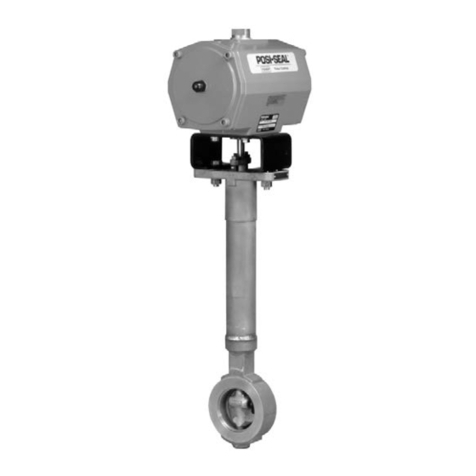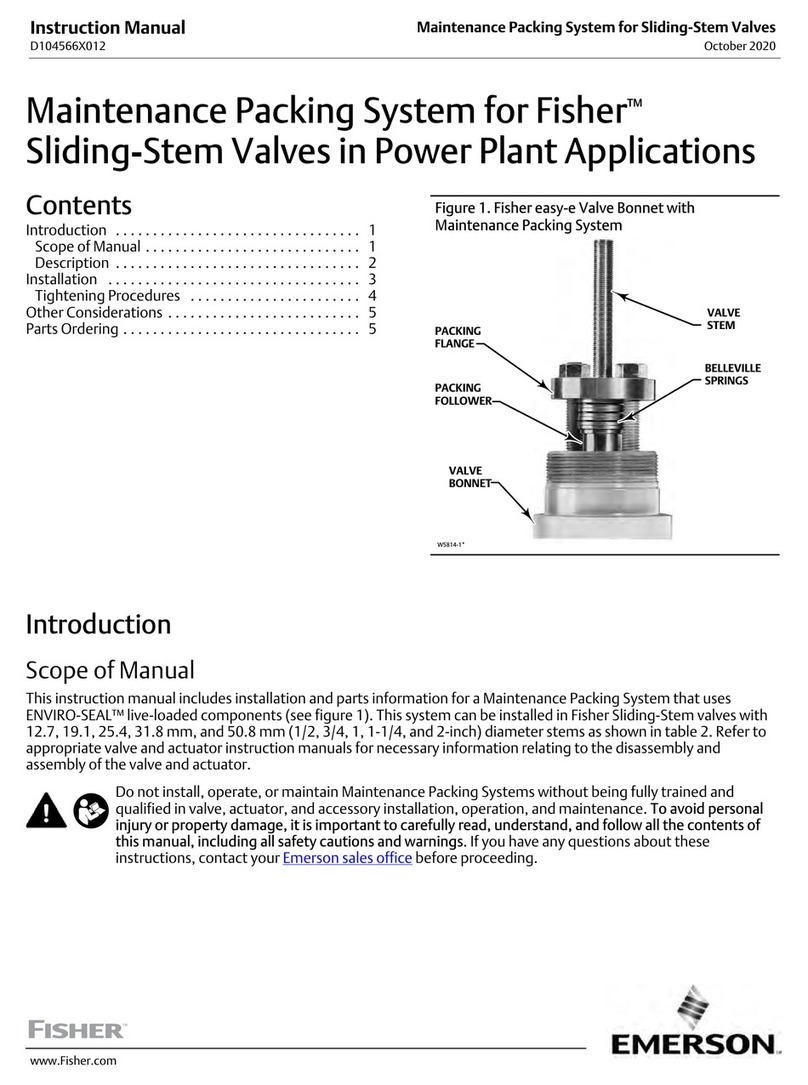
2
2.2 Repair
2.2.1
Inspect the nozzle (3) and disk (29) seat
surfaces for nicks or scratches. Restoration
of disk and nozzle seat surfaces should only
require lapping and polishing. If the seat
surfaces are damaged more extensively,
machining may be required. Refer to
Section 9.
2.2.2
Inspect piston rings (11 and 12) for scratches
or galling. If replacement is required refer
to ring kits listed in Section 7. Remove
rings and centralizer springs (21 and 22).
Discard rings and springs. Assemble
new rings and centralizers on piston.
Following the instructions supplied
in each kit. If piston ring expanders
ANDERSON GREENWOOD SERIES 727 PILOT OPERATED SAFETY RELIEF VALVES
InstallatIon and MaIntenance InstructIons
2 MAIN VALVE MAINTENANCE
2.1 Disassembly
(Refer to Figures 1 thru 3A)
2.1.1 Note: for ease of repair, the tools and
repair kits specified in Section 7 and
Section 8 should be used.
2.1.2 Use a
11
/
16” wrench to remove all supply
tubing and set aside. Disconnect tubing
from unloader to outlet flange (See note 1)
.
If the field test option is installed, remove
both shuttle check valves, related tubing
and fittings and set aside.
2.1.3
Remove blowdown hand valve if one is
installed on the pilot. Use a ¼” allen wrench
to remove pilot retaining screws and pilot
from main valve mounting block and set
aside.
On the 6 x 8 and 8 x 10 valves, the mounting
block will be removed along with its pilot.
Clean off all gasket residue where applicable
being careful not to damage surfaces.
2.1.4
Reposition main valve with cap (2) up.
Remove cap nuts (7). The compressed dome
spring (10) should raise the cap off the valve
body. Remove the cap (2). If the cap appears
stuck to the valve body, free it by tapping
around the cap edge with a brass hammer
or by wedging a large bladed screw driver
between cap and body to free cap.
Should the loosened cap still not rise,
proceed with caution. The spring loaded
2.1.5 Remove piston (4) with disk (29). For sizes
6 x 8 and 8 x 10, a ½-13 UNC eye bolt can
be threaded into back of piston to aid in
removal. The weight of 6” and 8” pistons
may require use of a lift assist device.
Protect disk seat face from damage.
(SeeNote 2)
2.1.6 Before removing liner (5), remove and
discard compacted liner seal (13) being
careful not to damage metal surfaces.
Remove liner (5).
2.1.7
Use only a 12 point socket to remove
nozzle retaining screws (9), and spring
washers (23). To remove nozzle (3),
reinstall two screws 180 degrees apart
without the spring washers. Tap lightly on
screws and drive nozzle (3) free of seal (15).
Remove screws, nozzle (3), nozzle seal (15)
and extrusion ring (14). Discard screws (9),
washers (23) and nozzle seal (15). Under no
condition reuse items 9, 23, and 15.
NOTE
1. If valve is not equipped with an unloader contact
factory for instructions (refertoFigure 1).
2. The disk cannot be disassembled from the 2”, 3”
and 4” valve size piston. The 6” and 8” size disk can
be removed for replacement or relapping. Loosen
three disk assembly retaining screws located inside
piston at spring stop. Hold piston and unscrew disk
assembly with strap wrench.
1 GENERAL VALVE DESCRIPTION
1.1 Operation
The Series 727 Pilot Operated Safety Valve
uses the principle of loading the larger area of
a differential area piston with line pressure to
hold the piston closed up to set pressure. On
rising system pressure, the pilot actuates at set
pressure, venting the small volume of steam
in the dome of the unloader. The unloader
(seeNote 1) is connected directly to the main
valve dome chamber and allows the pressure
to vent into the outlet of the main valve. When
dome pressure is reduced to 40% of system
pressure, the main valve disk lifts off the nozzle
seat, thereby venting system pressure through
the outlet.
When system pressure drops by 5 to 7% of set,
the pilot closes, forcing the reseat piston off its
seat, allowing system pressure to re-enter the
pilot and close the unloader. Recharging of the
main valve dome occurs through the hole in the
main valve piston causing the disk to reseat on
the nozzle.
When operating below set pressure, the inlet
and main valve dome pressures are equal so
that the seating force on the main valve seat is
equal to the system pressure times the seating
area. Since the seat load increases with system
pressure, the main valve maintains premium
seat tightness up to set pressure.
damper may be stuck in the piston and
could suddenly release after the cap is
removed.
Remove damper (8), dome spring (10)
and filter assembly (19). Filter may be
removed by grabbing sleeve with pliers.
Set filter assembly aside for cleaning and
inspection. Reuse if not damaged. Remove
and discard seal (20) at filter port on both
cap and body. Do not remove unloader
(if valve is equipped with one) unless it
leaks. Remove pipe plug (18) in cap (2)
(See detailA in Figure 2) and remove drain
plunger (17) and spring (16) if valve is so
equipped (see detail A in Figure 2).
described in Section 8 are not available,
both rings can be hand installed on the
piston. Carefully expand correct ring over
piston O.D. Place brass shim stock under
ring gap end to prevent scratching piston.
Slide ring into groove.
2.2.3 Inspect liner (5) interior for damage.
Replace liner if damaged.
